Industry-Sponsored Student Capstone Projects
2021/2022
In the 2021/22 academic year the industry capstone program was supported by 62 sponsors and 95 real-world projects. Over four hundred students from across the College of Engineering participated. Scroll down to learn more about each project.RealNetworks
Real-Time SDR to HDR Up Conversion with Automatic Dynamic Mid-Level Tone
Display technology has advanced over the past decade, providing consumers with smart TVs of higher resolution, frame rate, brightness and significantly more vibrant colors (HDR). However, movies are still captured, encoded and rendered in a format that doesn't take advantage of colors available (SDR). The student team worked to solve the problem of SDR to HDR conversion using a mix of color theory and AI rather than brute force machine learning only.
RealNetworks
Speed Matters: Video Facial Recognition
Current Facial Recognition (FR) evaluations performed by the National Institute of Standards and Technology (NIST) use still photos, not from video. However, successive frames of a video stream can provide a single context of and individual's presence such that consecutive recognitions of the same individual could be made with increasing confidence. The student team worked to redefine FR accuracy for real-time video and evaluate the hypothesis that accuracy compounds with successive frames of a live video feed or develop an alternate formula.
Sagetech Avionics
Remote ID Solution for Unmanned Aircraft Systems
Sagetech Avionics designs micro transponders and collision avoidance systems for use primarily in Unmanned Aircraft Systems (UAS) but that are also relevant to crewed aircraft. UAS are now required to be equipped with a remote ID solution, which is essentially a Bluetooth 4/5 or Wi-Fi transceiver that broadcasts data and can be displayed on a smartphone. The device needs to reach a range of 2km. There is a specified data format that is detailed to transmit the UAS ID, type, timestamp, operational status, position, altitude, velocity, heading, etc. This student team worked to build prototype hardware that can be used on multiple UAS to be tracked on a common display application on a smartphone/tablet. They completed a drawing package, executed hardware, software, and application software test plans, documented results, and performed applicable environmental tests.
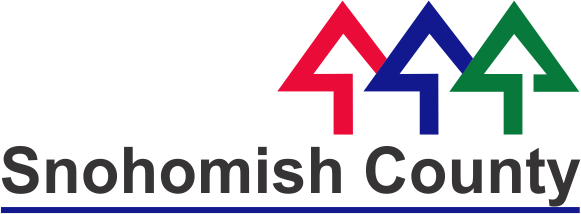
Snohomish County
Retail Software Database Integration
The county routinely inspects workstations using a inventory technology installed on each workstation. With this tool the IT Department has identified over 7,200 different retail software types and versions installed across approximately 3,500 workstations. The number of licensed installations and users for each type/version of software varies from 1 to everyone. Several of the retail software types are duplicative, or multiple versions exist across the county due to varying business needs and purchase patterns over time. Snohomish County does not have a simplistic and user-friendly approach to search the different types, identify current use cases, or consolidate versions and types across the county. As Snohomish County expands their technical expertise within their workforce, this inventory scope is anticipated to grow exponentially. Snohomish County needs to easily identify standard products and deploy them quickly at a low cost of both time and cash outlay. This student team worked to understand Snohomish County employees' varying preferences, experience, and abilities in an effort to understand their use of software applications, as well as to determine how best to establish a simple and intuitive design for application acquisition on demand.

Sound Transit
Design and Development of a Wireless Mesh Network for Sound Transit Commuter Rail Trains
Sound Transit's current heavy rail commuter trains use carriages that are shuffled regularly to form a consist, but do not have a network to allow for consist-wide communication for the various systems that exist on each carriage. As a result, tracking and finding information about entire consists is very difficult to do efficiently. The student team worked to create a prototype of a consist-wide network for these preexisting systems to communicate through, while also allowing carriages to be rearranged and moved to different consists while automatically joining the network of their new consists with no human input.
Stryker
Wireless Airway Management System for Emergency Medical Applications
Capnography is a non-invasive measurement of partial pressure of CO2 from the human airway. Existing capnography devices utilize side-stream technology, which is inconvenient, messy and bulky, and does not provide Emergency Medical Technicians (EMTs) with the most helpful, real-time feedback. The student team worked to create a portable main-stream capnography device that is capable of measuring End-Tidal CO2 from the exhaled breath of a patient, as well as inspiratory and expiratory flow rate and airway pressure so EMTs can know, in real-time, whether they are ventilating a patient properly.
Stryker
Wireless Blood Oxygenation Sensor III
Wireless blood oximeters can measure the user's SpO2, SpCO, and SpMET and transfer the data wirelessly to a user's laptop. Because of the wireless design, it's possible to make the oximeter more compact and portable. The student team built on the work of a previous capstone team to fix issues and build a functional version of the product.

T-Mobile
Wireless Broadband Service Quality Prediction App
This student team worked to design and test a system comprised of a simple, customer "do-it-yourself" tool embodied as an Android app. This app reads low and FDD mid-band signal quality being experienced in the home and, using a machine learning based model, predicts service quality for the higher TDD mid-bands. Through this, the app can tell the internet speed the customer can expect from the T-Mobile Home Device before subscribing to it.
Telenav
Point of Interest Deduplication
A Point of Interest (POI) is a set of information about a place with details such as title, address, geo coordinates, and category of the place. Telenav has large POI datasets that are used to provide navigation services, however the datasets are at risk for containing complex duplicates of POIs due to data aggregation from various vendors. The student team worked to design, develop, and test a Java API library that will be used by Telenav to determine whether two POI objects should be considered duplicates or not.
Tupl
ML Performance Drift Detection and Correction with Time Series and Active Learning
Machine Learning (ML) models drift and show degradation in performance as real-world data change over time. Therefore, these models need to be retrained with new data that reflect the new reality of the process. The student team implemented an ML Drift Detection module to automate detecting and measure drift, and an Active Learning module to retrain the model using new data in an effective way. The solution is implemented as a microservices REST backend with an interactive UI for the user to input necessary parameters and to show the vital parameters of the ML model.
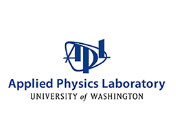
UW Applied Physics Laboratory (APL)
Ultrasonic Transducer System for Ice Melt Probe
The University of Washington Applied Physics Laboratory has been developing an ice melt probe to study subglacial lakes up to five kilometers beneath the surface of the ice. One limiting factor in the depth that the probe can reach is a lack of telemetry. The student team designed a system that uses ultrasonic acoustic pulses to measure the thickness of meltwater that forms around the probe as it makes its descent.
UW Department of Computer Science and Engineering
Using VR to Model and Control Realistic Octopus Experience
The student team worked to create a virtual reality experience to help increase the user's empathy for octopuses. With guidance from experts, the team created an octopus model and implemented AI that accurately replicates the behavior pattern of real octopuses. The work culminates into a sandbox VR experience that highlights functionality of the model and allows the user to experience the environment from the perspective of an octopus.

UW Department of Electrical & Computer Engineering
Degree Progress: Web App for Student Degree Planning
This student team worked to design and develop a web based tool to simplify the degree planning process for undergraduate students. The application demonstrates a comprehensive list of degree requirements and career paths to make it simple for students to plan courses for future terms. Open-sources technologies NGINX, Django, HTML, and CSS were used to build and deploy the website.

UW Medical Center
High Frequency RF Phase Meter
The UW Medical Center Cyclotron accelerates particles using two high frequency RF signals. The phase difference between the signals is a critical parameter in the acceleration inside the cyclotron and the extraction efficiency of the test particles. The student team designed, built, and tested a new RF phase meter system which accurately detects this phase difference with improved components to replace an outdated and hard to maintain system while providing thorough and accurate documentation that can be further utilized by the UWMCF staff.
Volansi
Volansi NextGen Autopilot and Backplane
Volansi logistics drones are currently used to support an initiative that is trying to provide healthcare (vaccines, medicines, etc.) to areas where it is needed most, such as rural and natural disaster areas. Current models of Volansi drones are not optimized for drone operators who are not trained engineers and rough operating conditions where heat and vibration are large factors. The student team developed modular backplane and autopilot boards to ease drone repair in the field and ensure the durability of drones in all environments.
Related News
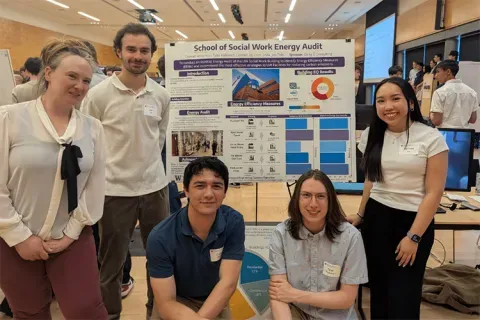
Mon, 10/13/2025 | UW Mechanical Engineering
Capstone collaboration leads to award
An ME capstone team received first place for its energy audit of the UW School of Social Work building.
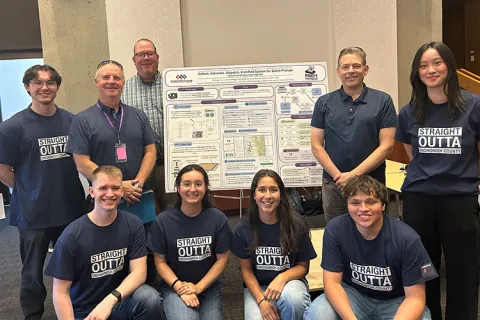
Thu, 07/17/2025
UW engineering students develop smart ballot solution
UW engineering students develop smart technology solution to improve ballot collection for Snohomish County.
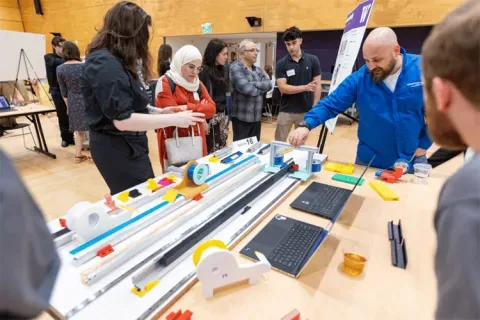
Mon, 07/07/2025 | UW Mechanical Engineering
Capstone creations
Students displayed innovative capstone design projects at the 2025 expo.

Fri, 09/20/2024 | UW Civil & Environmental Engineering
Smarter irrigation for a greener UW
A new project combines satellite data with ground sensors to conserve water and create a more sustainable campus environment.